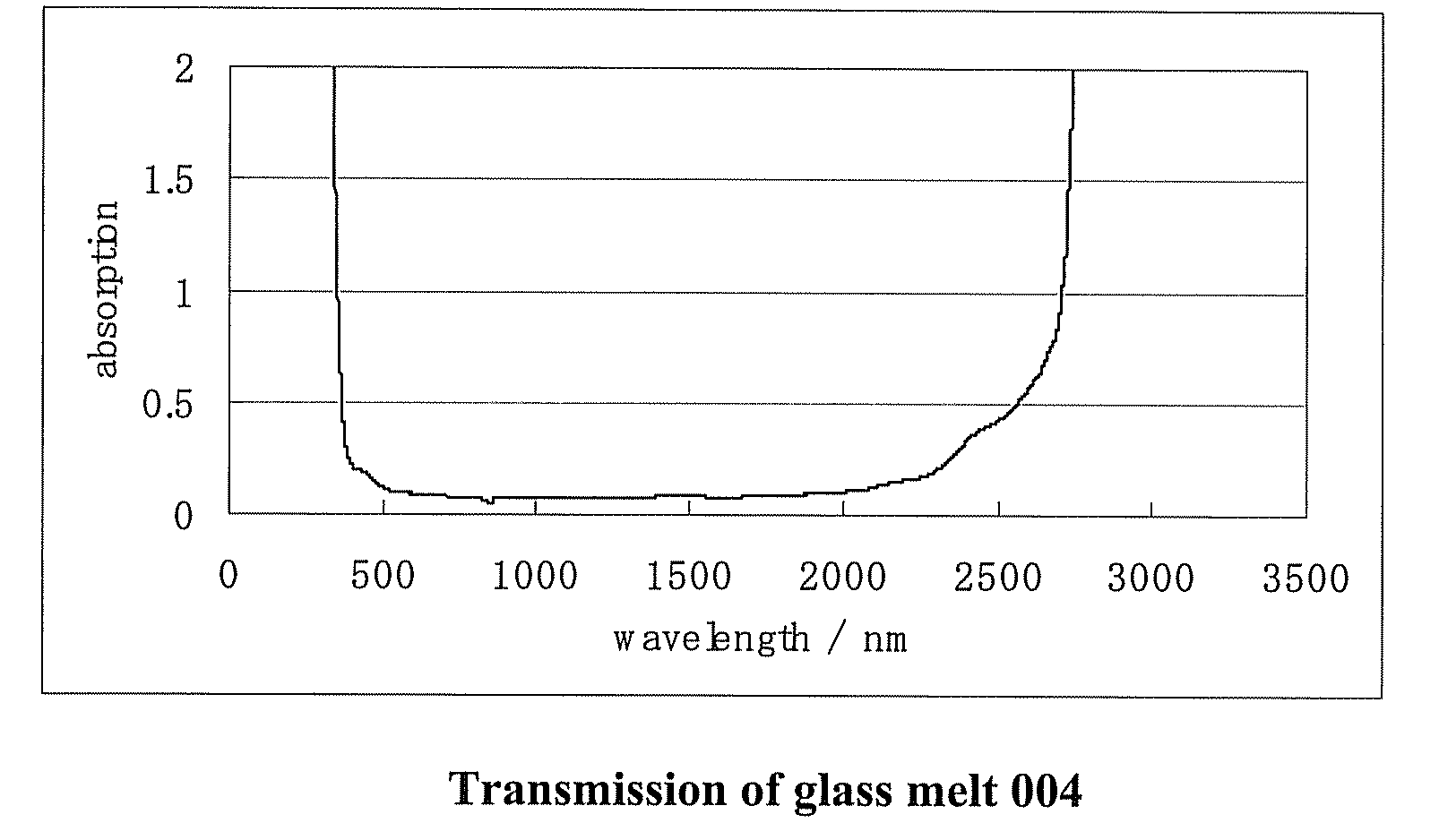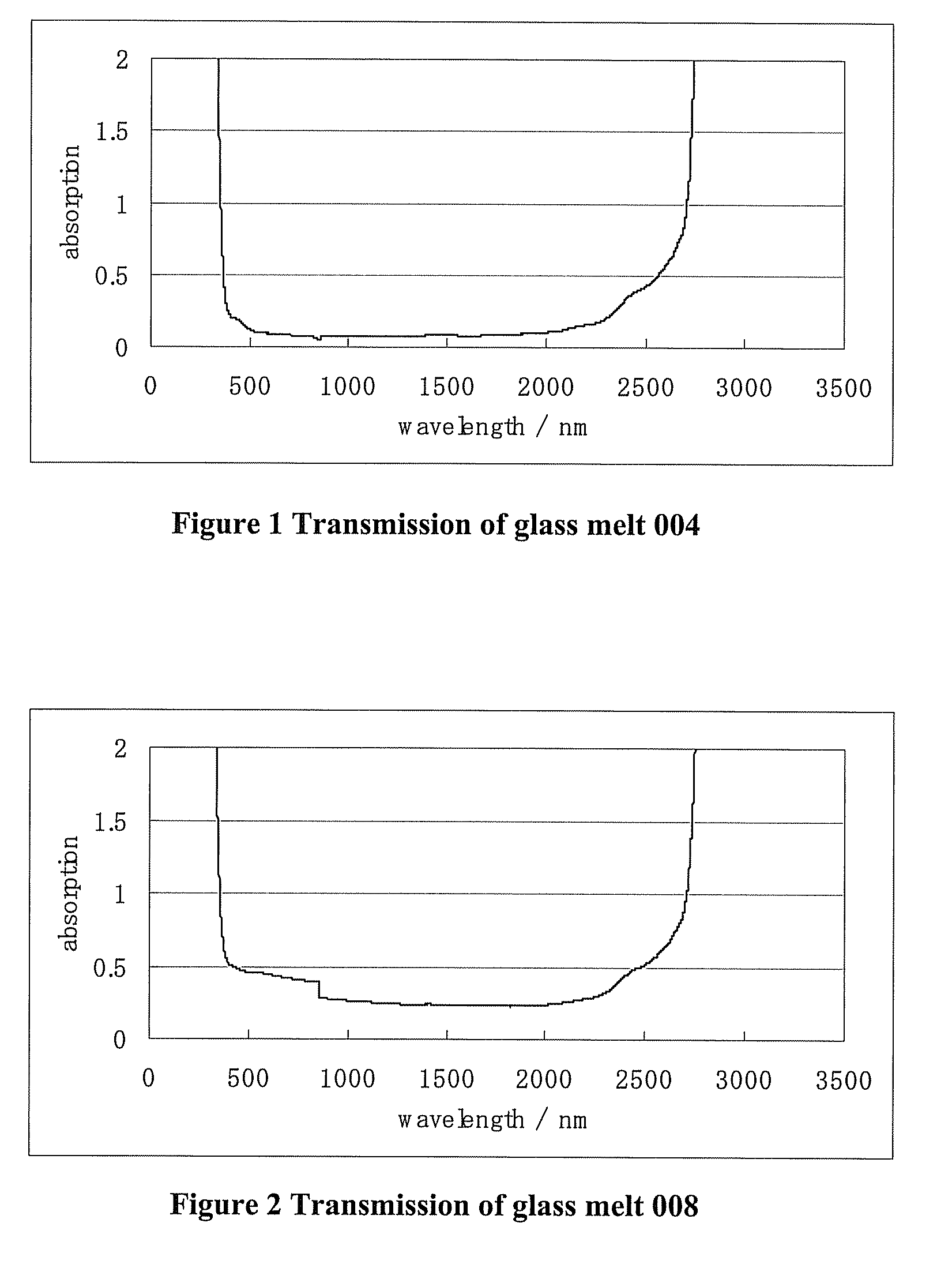Optical glass
- Summary
- Abstract
- Description
- Claims
- Application Information
AI Technical Summary
Benefits of technology
Problems solved by technology
Method used
Image
Examples
Embodiment Construction
[0037]The present invention is described herein in connection with the following examples. It should be noted, however, that the scope of the present invention is not limited to the examples herein.
Experimental Procedure
Glass Preparation
[0038]Glasses were prepared from 99.5% H3BO3 and reagent grade La2O3, ZnCO3, ZrO2, SrCO3, and SiO2. Table 2 shows the glass compositions in batch weight (g) of the La2O3—ZnO—B2O3-based glasses. Batches calculated to yield approximately 50 g glass were melted in Pt / Rh crucibles without a lid at 1100-1450° C. for 0.5-1.5 h in air. After the glasses were fined they were removed from the furnace, cast into heated steel molds and allowed to cool freely to a temperature at which they could be transferred to a preheated annealing furnace, provided the annealing temperature was known, or could be surmised. If the annealing temperature was not known the glasses were cooled freely to room temperature and DSC was performed on the glasses to determine the onset ...
PUM
| Property | Measurement | Unit |
|---|---|---|
| Temperature | aaaaa | aaaaa |
| Temperature | aaaaa | aaaaa |
| Temperature | aaaaa | aaaaa |
Abstract
Description
Claims
Application Information
 Login to View More
Login to View More - R&D
- Intellectual Property
- Life Sciences
- Materials
- Tech Scout
- Unparalleled Data Quality
- Higher Quality Content
- 60% Fewer Hallucinations
Browse by: Latest US Patents, China's latest patents, Technical Efficacy Thesaurus, Application Domain, Technology Topic, Popular Technical Reports.
© 2025 PatSnap. All rights reserved.Legal|Privacy policy|Modern Slavery Act Transparency Statement|Sitemap|About US| Contact US: help@patsnap.com


